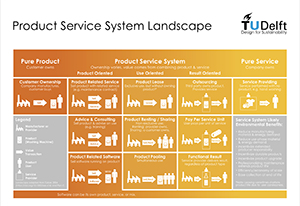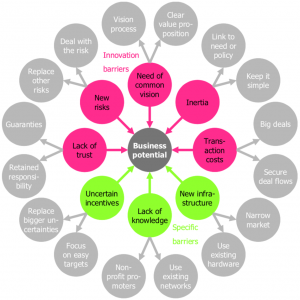circular economy
Content
Business Models for a Circular Economy
 Goal: Understand business strategies to enable closed-loop production, so each end of life becomes a new beginning.
Goal: Understand business strategies to enable closed-loop production, so each end of life becomes a new beginning.
Designing for the circular economy requires new business models to make designs viable. How do ten people share the product? When do they pay, how do they get access, etc.? Or if your products last ten times as long, how do you stay in business? You might charge more, or add profitable upgrade, repair, and maintenance services. You might also change the business model: perhaps you own the product instead of the user, and charge subscription fees for use, rather than a one-time purchase every few years. A similar business model also works for sharing the product across many people. If none of these are possible, you might at least use a business model that takes back old products and remanufactures them, or reuses material. Then you can design your products to enable these better lifetimes.
As mentioned above, sharing a product among ten people can reduce its material impacts per person by 90%. Product service systems redesign the product (and, more importantly, its business model) for sharing. There are many ways of doing this; click on the graphic below for a summary.
Product service system landscape. Image credit: Jeremy Faludi, TU Delft; inspired by Tukker 2004.
Designing product service systems is a deep field of study with multiple books on the subject. Another source of information on product service systems, including barriers to adoption and how to overcome them, is Promoting Innovative Business Models with Environmental Benefits by the EU Commission, especially section 5.2 “Business Rationale” (pp.29-31) and section 7, “Realizing PSS” (pp.39-46).
Barriers to product service systems and how to overcome them, from the EU Commission paper above.
Finally, a more general tool for environmentally and socially responsible entrepreneurship is the Business Sustainability Booster by prof. Marsha Willard of the Presidio Graduate School of business. It is an overlay for the standard Business Model Canvas, presenting sustainability considerations at each step. It is an exploratory tool, not giving you answers, but giving you questions to ask in each section of the business model canvas to help drive sustainability. The video below summarizes it:
This can help drive more holistic and comprehensive sustainability strategies.
All VentureWell Tools for Design and Sustainability content is shareable and usable by CC BY-NC-SA 4.0 license.

